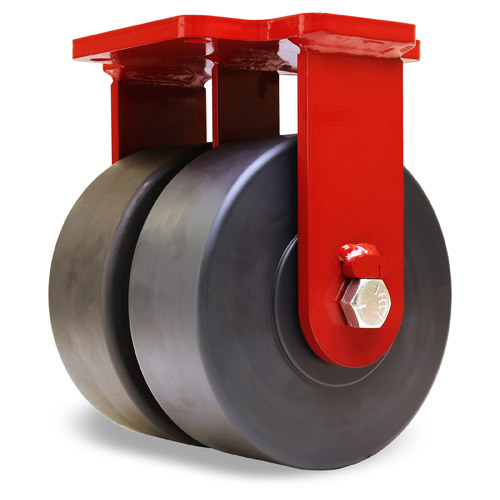
Swivel casters exhibit various resistances depending on the surface on which they are used. For example, tile surfaces and carpets exhibit less swiveling resistance. As such, carpet surfaces should be avoided when maneuvering an MWC. The curvature radius of the wheel trajectory also significantly affects the swivel resistance, though this decrease is not linear.
Dimensions
Swivel casters have different starting and rolling resistances. The lower the starting resistance, the easier the cart will move. Larger swivel wheels and harder materials are better at reducing resistance. Dimensions should be kept in mind when selecting a caster for your application.
Determine the weight of the object you will be moving with the caster. To determine this, measure the object’s weight to be moved, including the cart and any additional loads. Next, multiply this total weight by the number of casters you require minus one. It will build a buffer zone for capacity. If your desk is too short for the caster, you may want to reduce the number of casters to a lower number.
Kingpin
Traditional swivel casters have a kingpin construction that helps with turning and pivoting. The kingpin is made up of a stem connecting the swivel caster’s lower section to the top plate. Kingpins are threaded, so they are used for load-bearing and thrust-bearing wheels. These casters may not have a kingpin but they are still useful in the workplace.
The resistance of the swivel caster is directly proportional to the load it carries. This is because the center part rotates slowly, whereas regions on the sides are faster. Therefore, the heavier a cart is, its resistance will be higher. To counteract this effect, use swivel casters with wider wheels. It will reduce the resistance to turning in place and increase load capacity.
Construction
Swivel casters’ resistance is affected by construction. One of the most common issues is caster flutter, which occurs when the caster loses full contact with the ground and moves in an unexpected direction. When flutter occurs, the vehicle can quickly slow down and shift weight to the front wheels. Caster flutter can be prevented by adding dampers or adjusting the swivel lead. Another option is to change the material used for the casters. Caster cups can also be installed to stop the wheels from rolling.
Traditional swivel casters are also susceptible to failure under high-speed cornering and towing. It is because casters are usually rated for a load at walking speed. But towing at 5-6 miles per hour can cause the swivel section to deform. It is due to two-component forces: rolling resistance and starting resistance. When determining the resistance of a swivel caster, keep in mind that larger wheels are harder than smaller ones.
Vibration
Swivel casters are very versatile and can be used in many different settings. High-grade commercial casters can move large loads while minimizing noise during operation. On the other hand, heavy-duty ball-bearing casters are designed for a wide range of applications, including kitchen and industrial equipment, small space furniture, and more. Here are a few factors that you should consider when buying casters for your needs.
First, the material of the wheels can affect the resistance. Soft floors require softer wheels, while hard floors can handle harder materials. Also, keep in mind the work environment, as some environments are wet, oily, and chemically exposed. Swivel casters are a good choice for tight spaces, while rigid casters are ideal for hallways. Finally, these wheels can be locked in place to keep them in place.
Failure Point
In the past, swivel casters utilized kingpins to attach the caster housing to the bracket and provide pivot motion. However, kingpins can be prone to failure in industrial applications due to their inherent tendency to absorb a great deal of stress. In these cases, kingpin-less casters have been developed. Instead, these casters use a raceway of ball bearings to connect the upper bracket and the caster housing, providing a smoother swivel motion.





